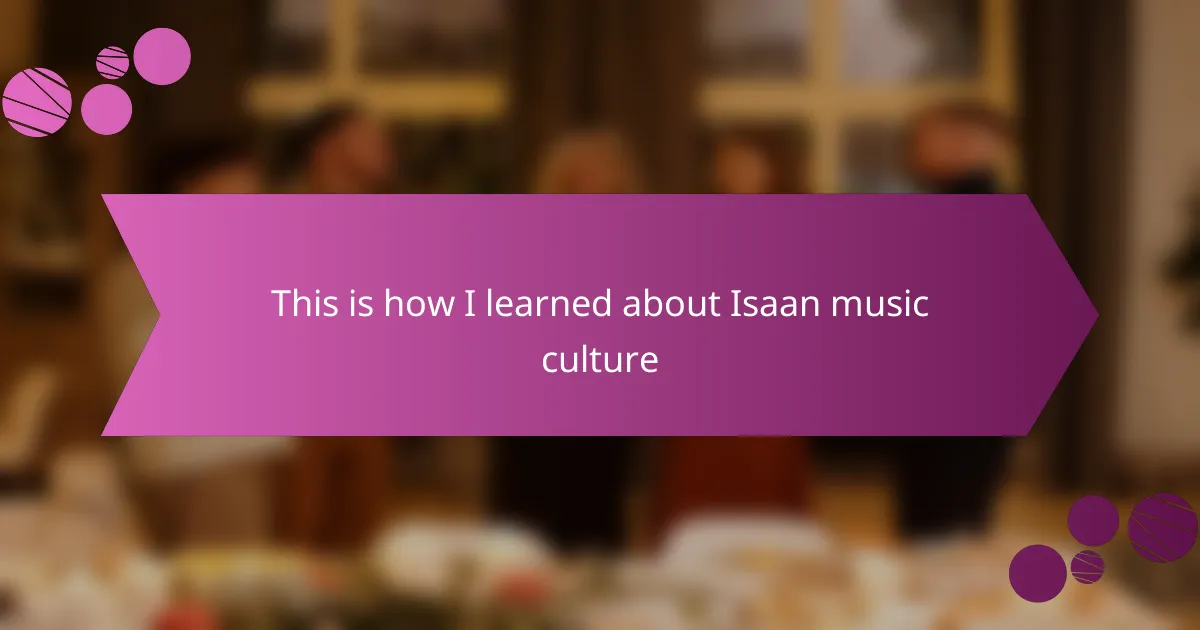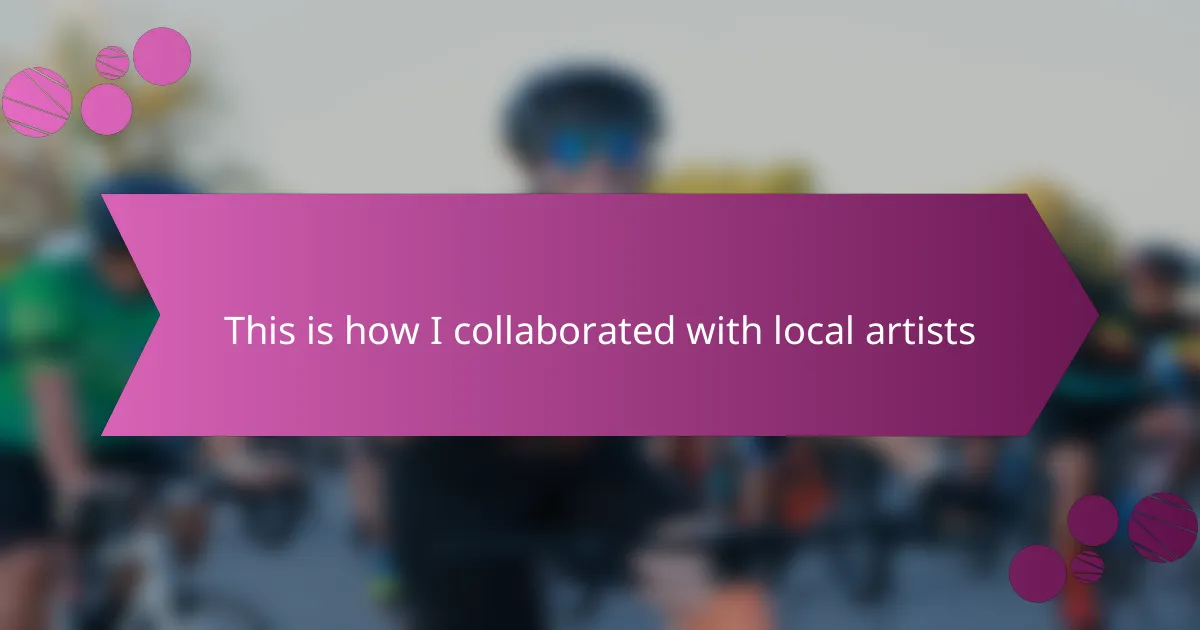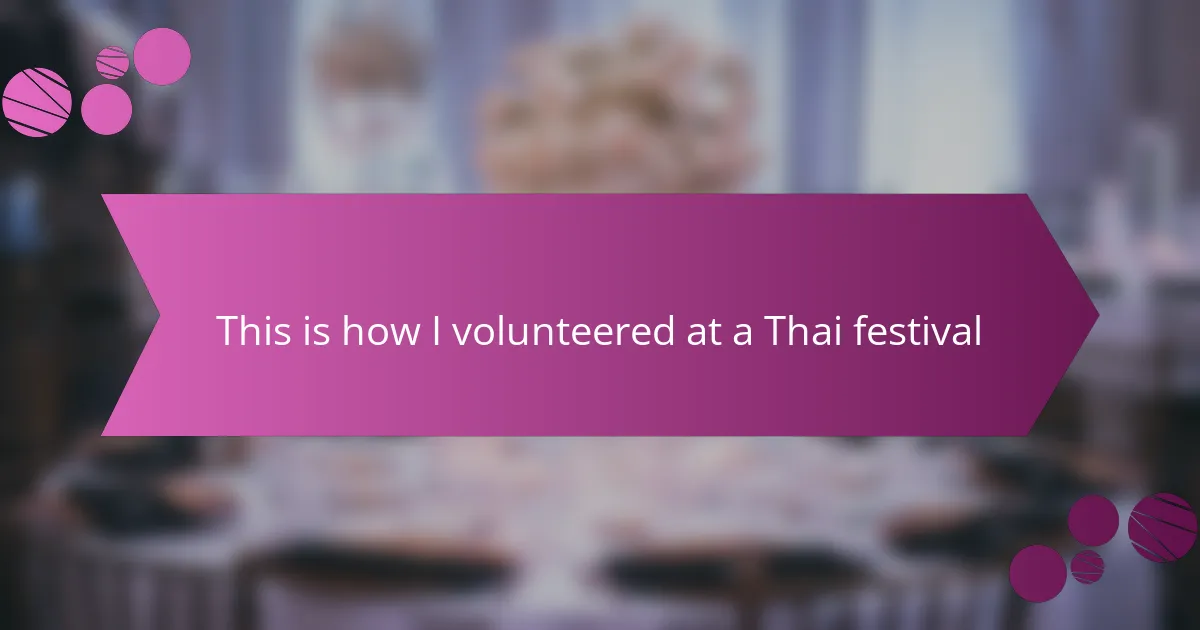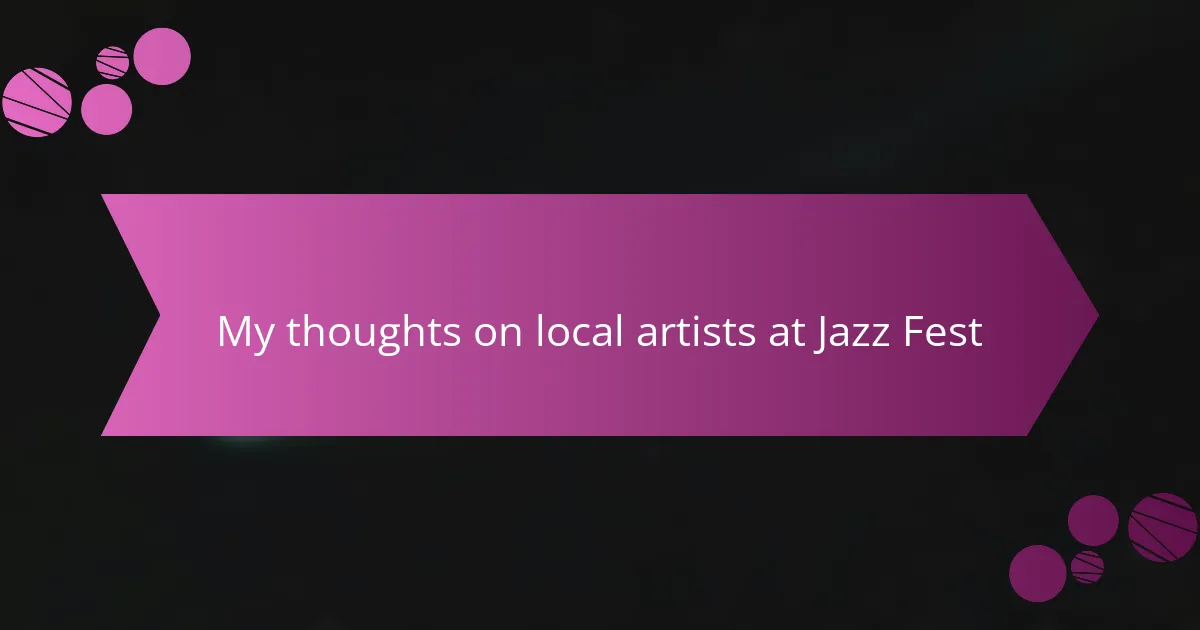Key takeaways
- Thai music festivals celebrate cultural heritage, blending traditional and modern influences while fostering community connection.
- Isaan music, characterized by vibrant instruments like the khaen and phin, conveys stories of love and resilience through energetic performances.
- Festivals such as the Isaan Cultural Festival and Bun Bang Fai honor traditional music, drawing people together and preserving regional identity.
- Personal experiences with Isaan music highlight the emotional connection it fosters and the unifying power of shared cultural celebrations.
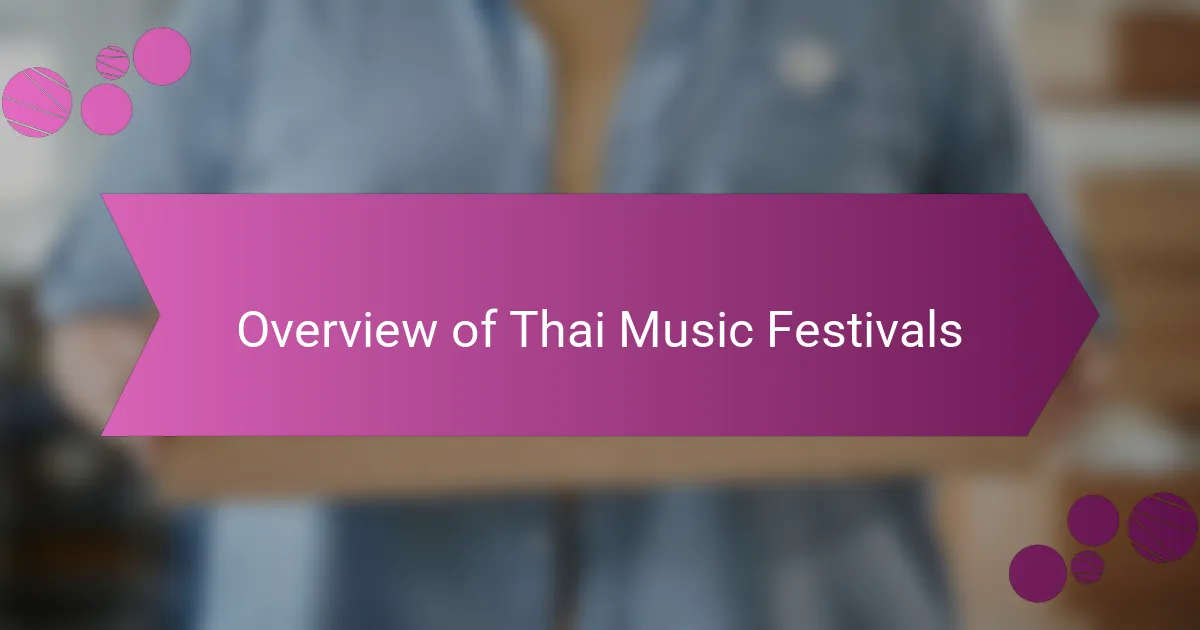
Overview of Thai music festivals
Thai music festivals are vibrant celebrations that showcase the country’s rich cultural heritage. I vividly remember my first festival experience in Thailand; the electric atmosphere and the pulsating rhythms drew me in completely. What struck me most was how they create a bridge between tradition and contemporary influences, making the music accessible to everyone.
Throughout the year, various festivals occur, each offering a unique glimpse into different musical styles—be it traditional folk to modern pop. Attending these festivals has been a remarkable journey for me. It made me wonder, how can a single note resonate so deeply with so many people? The communal spirit at these events profoundly showcases the power of music to unite and inspire.
Moreover, many festivals include culinary showcases, art installations, and local crafts, weaving a holistic cultural experience. This intertwining of music and local life enriches the festival atmosphere, making it not just about the sound but a true celebration of Thai identity. I often find myself reflecting on how every festival visit deepens my appreciation for the diversity and creativity in Thai music.
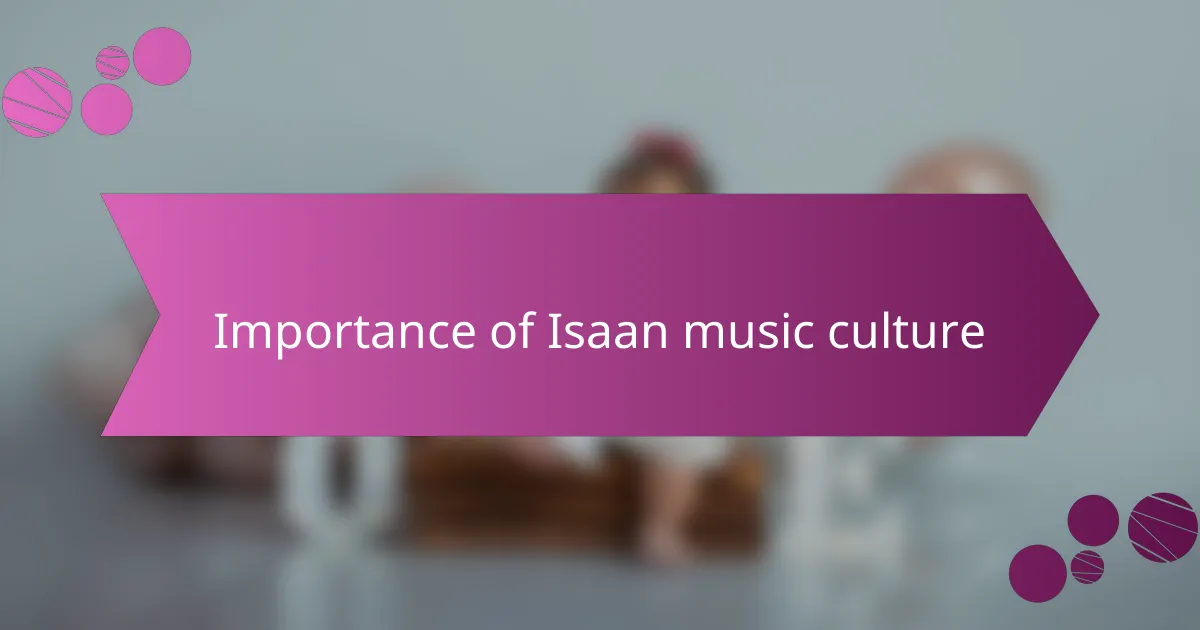
Importance of Isaan music culture
Isaan music culture holds a significant place in the heart of Thailand, reflecting the unique social and historical tapestry of the northeastern region. When I attended a local festival, the vibrant sounds of mor lam and luk thung grabbed my attention, instantly transporting me into the lives and stories of the people. The emotions conveyed through these musical styles not only entertain but also educate audiences on the rich traditions of Isaan.
- Celebrates the unique identity of Isaan people
- Preserves cultural heritage through traditional instruments and melodies
- Fosters community spirit during gatherings and festivals
- Serves as a medium to convey stories and social issues
- Encourages connection among generations, passing down traditions through music
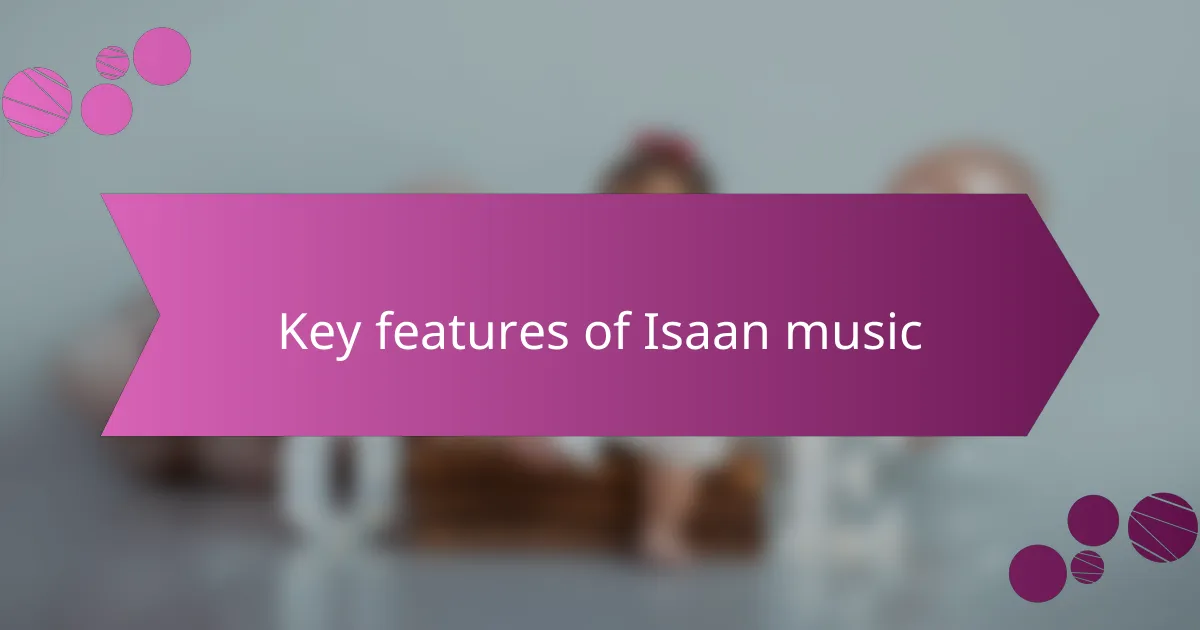
Key features of Isaan music
Isaan music has a vibrant and distinctive flavor that reflects the region’s rich cultural heritage. From my experience visiting Isaan festivals, I was struck by the infectious energy of traditional instruments like the khaen, a bamboo mouth organ that produces a warm, resonant sound. This unique instrument instantly drew me in, as its melodies are not just music; they tell stories of the local community and their daily lives.
One of the most captivating aspects of Isaan music is its connection to folk traditions and storytelling. I remember sitting under a starry sky, surrounded by smiling faces, and feeling the rhythm of Mor Lam echoing in my heart. The lyrics often explore love, hardship, and resilience, resonating deeply with listeners and sparking a powerful sense of unity among the audience.
Key features of Isaan music:
– Use of traditional instruments like khaen (bamboo mouth organ) and phin (a stringed instrument)
– Influences from local cultures, including Lao and Khmer traditions
– Storytelling lyrics that explore themes of love, life, and social issues
– Energetic rhythms that encourage dance and community participation
– Unique genres like Mor Lam and Luk Thung that showcase regional diversity
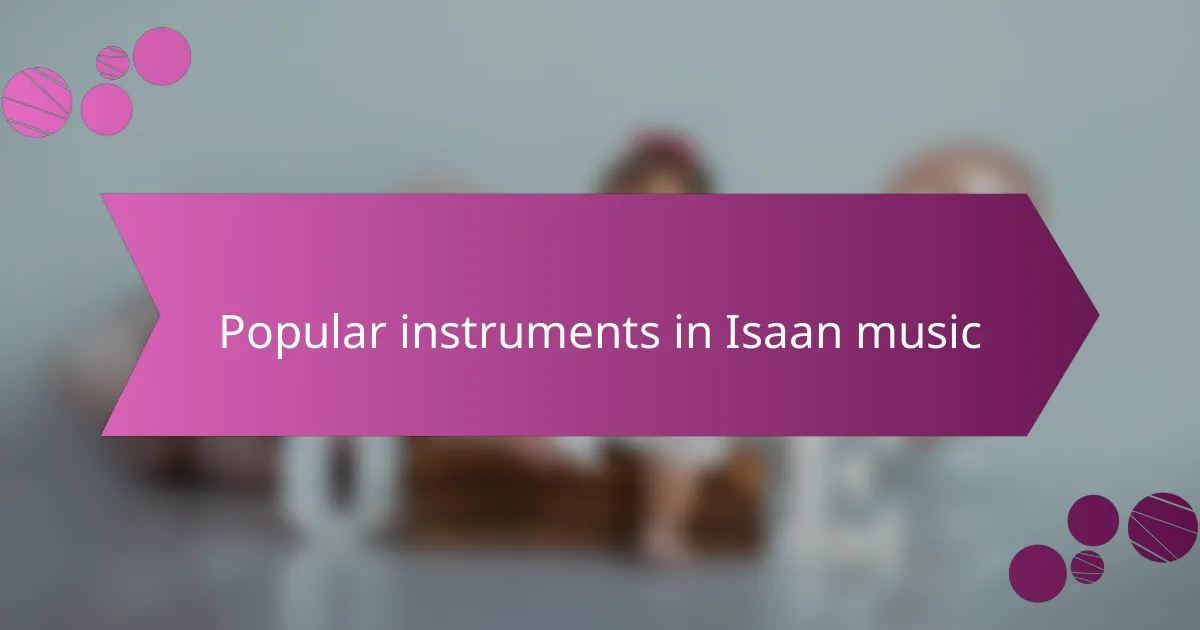
Popular instruments in Isaan music
The khaen is undoubtedly one of the most iconic instruments in Isaan music. Its unique bamboo construction allows it to create a rich, warm sound that resonates deeply within the heart of traditional folk songs. I still remember the first time I heard it played live at a festival; the atmosphere was electrifying, and it felt like the instrument was channeling the very spirit of Isaan. Have you ever heard a sound that makes you feel like you’re a part of something bigger? That’s exactly how the khaen made me feel.
Another instrument that captivates me is the phin, a traditional stringed instrument that adds a melodic layer to Isaan music. Watching musicians skillfully pluck its strings feels like a dance in itself, as they weave intricate melodies that accompany the heartfelt lyrics. I recall an outdoor gathering where the phin’s notes drifted through the air, inviting everyone to join in the celebration. It’s fascinating how these instruments not only produce music but also serve as vessels for cultural expression and connection.
Additionally, the tapper drums bring an intriguing rhythmic element to Isaan music. I often found myself tapping my foot to their lively beats, which pull people into a communal experience. Their energetic cadence encourages even the shyest among us to get up and dance, fostering a sense of unity and joy. Isn’t it amazing how rhythm can break down barriers and bring people together? That’s the beauty of Isaan music; it transcends words and resonates with our shared humanity.
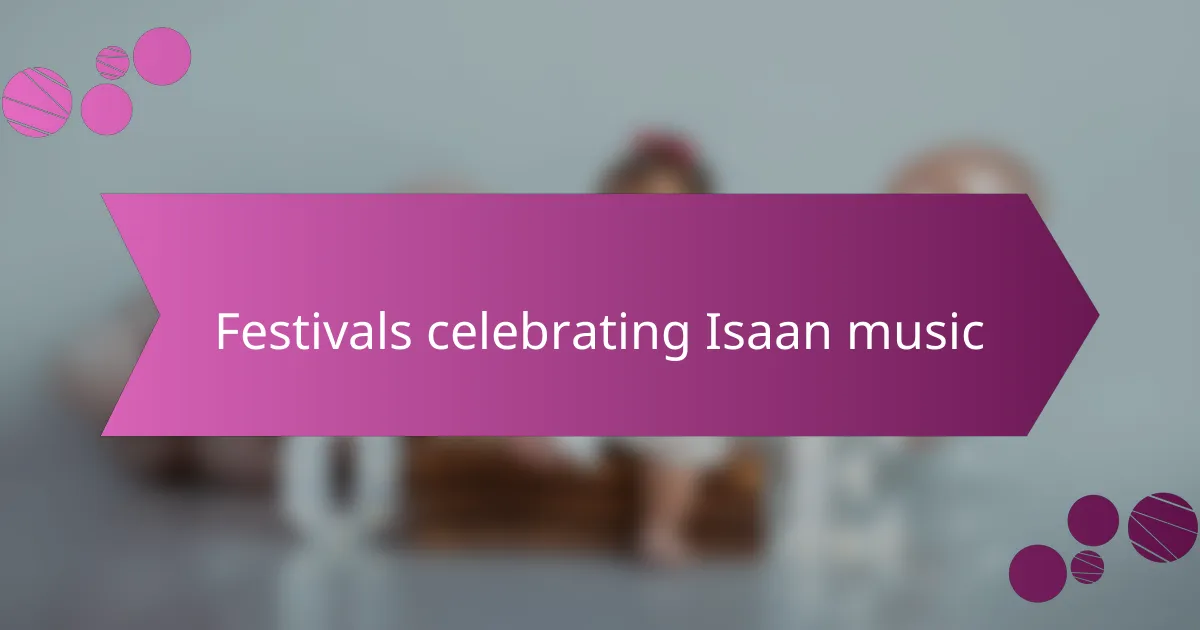
Festivals celebrating Isaan music
Festivals celebrating Isaan music are a vibrant spectacle that truly brings the community together. During the annual Isaan Cultural Festival, I was surprised by how the air was filled with the sounds of mor lam and luk thung, inviting everyone to join in the celebration. I can still feel the joy of dancing with locals, feeling that sense of connection and pride in our shared culture.
There’s something magical about the way these festivals honor traditional instruments. At the Bun Bang Fai Festival, as the khaen played, my heart raced with excitement; it felt as if the music was narrating centuries-old stories. Each note resonated not just with the crowd, but also with the essence of Isaan history, creating an unbreakable bond between the past and present.
One festival that left a lasting impression on me was the Surin Elephant Round-Up. Amidst the spirited performances, I marveled at how Isaan music narrated tales of everyday lives in the region. It dawned on me: isn’t it remarkable how music can serve as a bridge across generations? Festivals like these enrich our understanding, showing us that every rhythm and melody carries the heartbeat of the community.
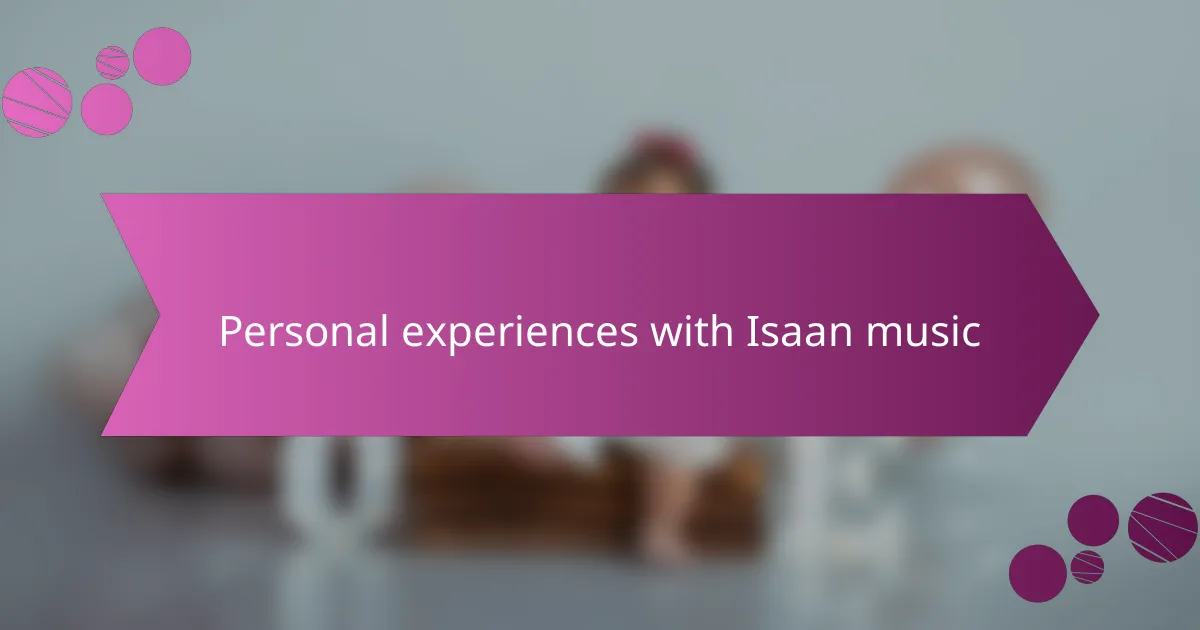
Personal experiences with Isaan music
When I first stumbled upon Isaan music, it felt like stepping into a vibrant world of sound and emotion. I remember attending a local festival in northeastern Thailand, where the stage was alive with the energetic rhythms of the khaen, a traditional bamboo mouth organ. The musicians’ passion was palpable, and I found myself swaying along with the crowd, completely captivated by the blend of folk melodies and contemporary influences.
Here are some highlights from my experiences with Isaan music:
– The Khaen: This instrument spoke to me like no other, its rich tones resonating in my chest.
– Community Vibes: Celebrating with locals fostered a sense of belonging, making the experience unforgettable.
– Dance Moves: The infectious energy of the mor lam (a style of Isaan music) had me on my feet, joining in the traditional dances.
– Sing-Alongs: I was surprised to find myself singing along, even though I didn’t understand all the lyrics; the emotion transcended language.
– Cultural Stories: Each song told a story of love, hardship, or joy, connecting me deeply with the culture and its people.
These moments not only enriched my understanding of Isaan music but also forged an emotional connection that I cherish.
